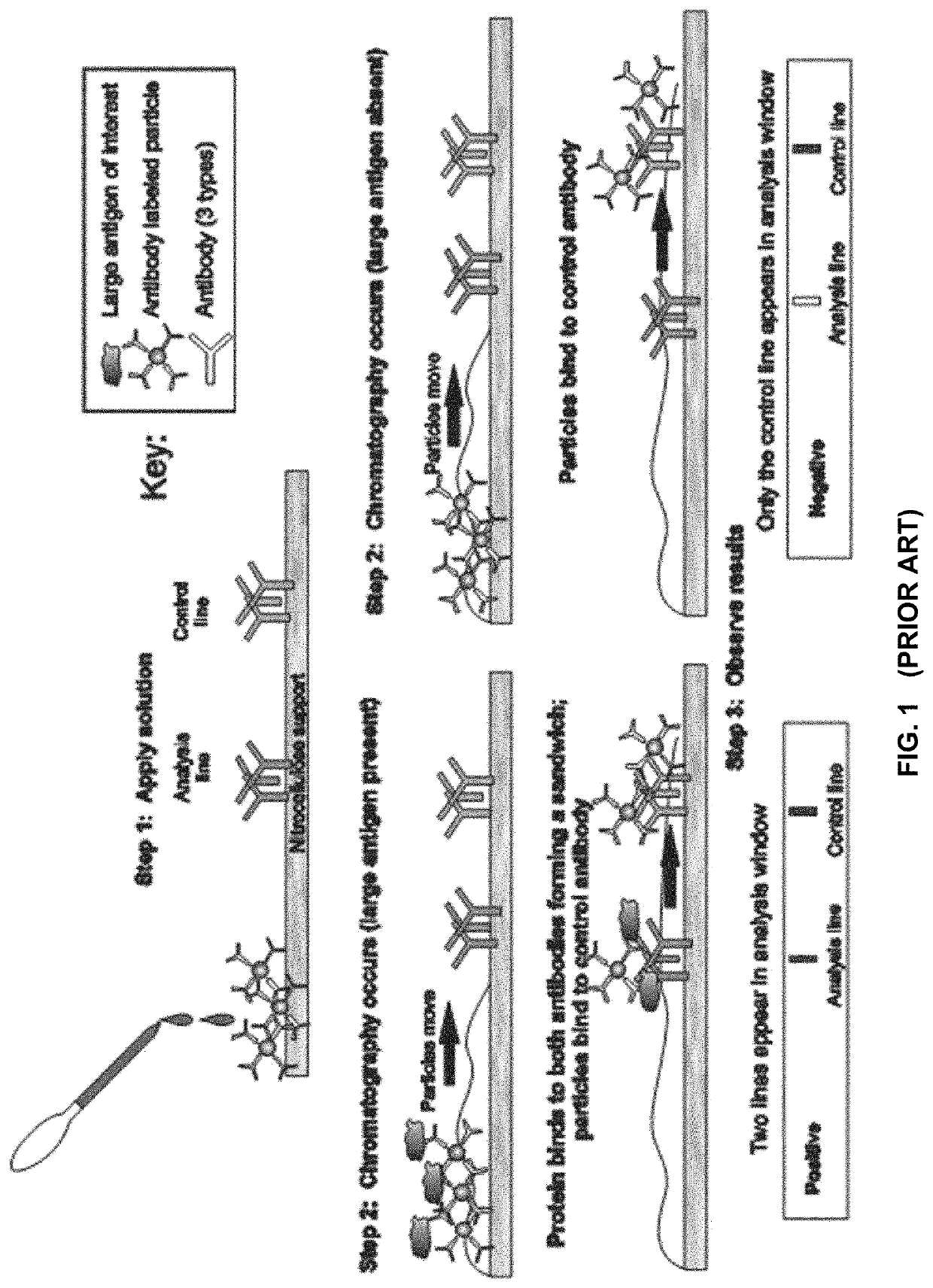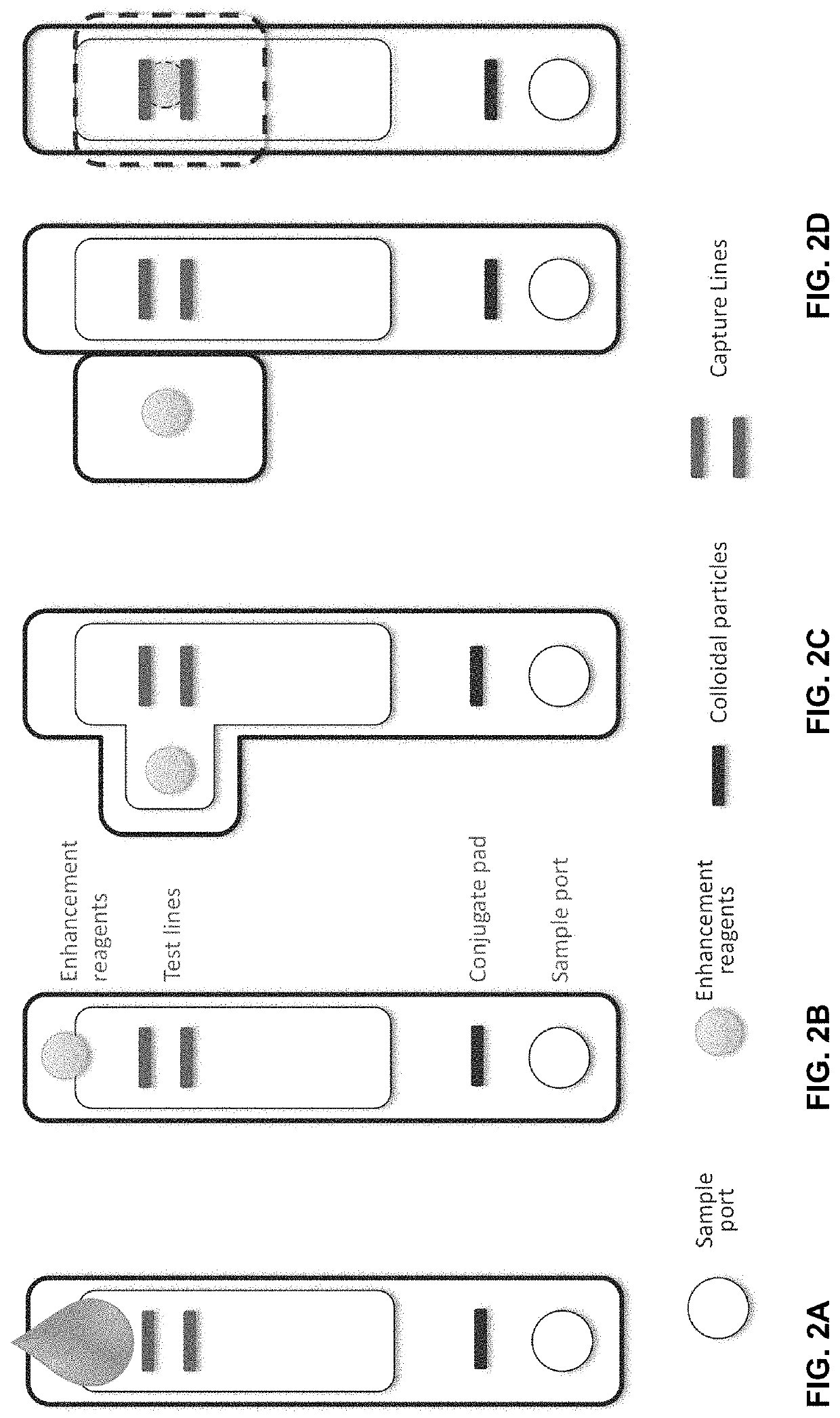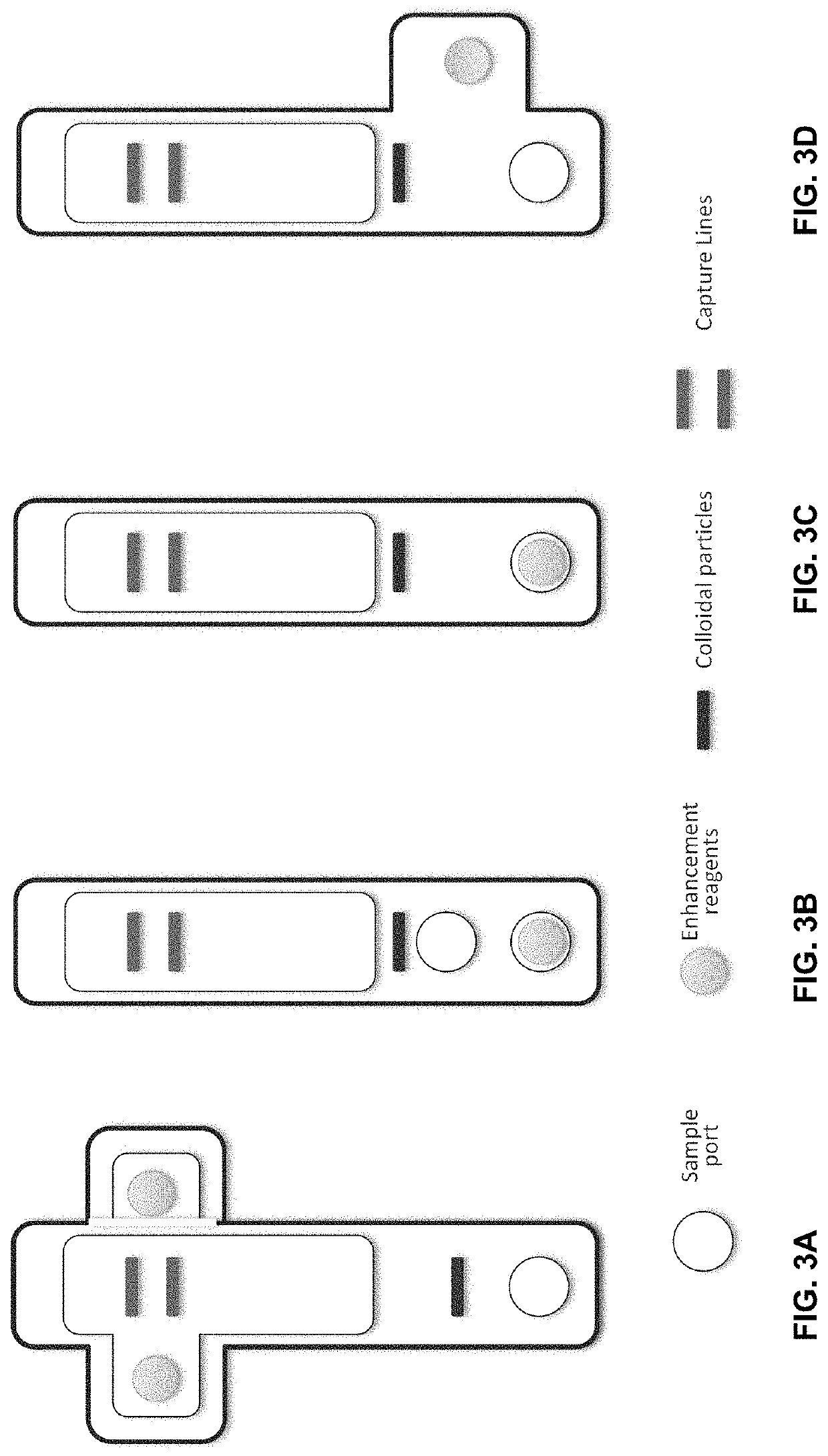Catalytic signal enhancement for lateral flow immunoassays
a catalytic signal and immunoassay technology, applied in the field of enhancing catalytic signals in lateral flow immunoassays, can solve the problems of the biggest weakness of the color density (and hence the sensitivity) of such a system is limited to the absorbance of the particle, etc., to achieve the effect of improving the timing of the development chemistry and increasing the sensitivity of the lfias
- Summary
- Abstract
- Description
- Claims
- Application Information
AI Technical Summary
Benefits of technology
Problems solved by technology
Method used
Image
Examples
example
[0028]A 10% sucrose solution in water was sprayed in several passes onto a strip of Fischerbrand Q8 ashless filter paper using a Biodot XYZ3060 AirJet sprayer at 1 μL / cm. The paper was died at 37° C. between each pass. The paper was inverted and a test dye solution of bromophenol blue in water was sprayed at 0.7 μL / cm using the Biodot XYZ3060 Biojet sprayer on the back. The delay pad was then dried at 37° C., trimmed, and adhered to a UniSart CN95 polyester-backed nitrocellulose strip below the test line using a covering of OmniMask 813 stencil material. The test line consisted of another line of bromophenol blue applied at 0.7 μL / cm using the Biodot XYZ3060 Biojet sprayer and then dried. The layup was cut into strips, adhered to DCN plastic backing cards (DCN, Carlsbad, Calif.). The plastic backing was cut into the width of the nitrocellulose strip and an absorptive pad attached using the adhesive of the plastic backing for retention of the pad. The finished test system was placed ...
PUM
| Property | Measurement | Unit |
|---|---|---|
| size | aaaaa | aaaaa |
| time delay | aaaaa | aaaaa |
| time | aaaaa | aaaaa |
Abstract
Description
Claims
Application Information
 Login to View More
Login to View More - Generate Ideas
- Intellectual Property
- Life Sciences
- Materials
- Tech Scout
- Unparalleled Data Quality
- Higher Quality Content
- 60% Fewer Hallucinations
Browse by: Latest US Patents, China's latest patents, Technical Efficacy Thesaurus, Application Domain, Technology Topic, Popular Technical Reports.
© 2025 PatSnap. All rights reserved.Legal|Privacy policy|Modern Slavery Act Transparency Statement|Sitemap|About US| Contact US: help@patsnap.com



